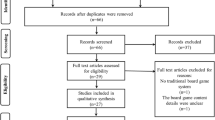Abstract
Major usability and technical challenges have created mistrust of the potential of brain computer interfaces used to control video games in challenging environments like healthcare. Despite several studies showing low cost commercial headsets can read the brainwave patterns of its users with great potential for long term adoption; there are limited studies showing its efficacy in concrete healthcare scenarios. In our past work, we developed FarmerKeeper, a BCI using users’ attention to control a runner videogame to support neurofeedback therapies with great usability and user experience. In this paper, beyond usability, we describe the results of a 10-week deployment study with 26 children with severe autism using FarmerKeeper as a tool to support the neurofeedback therapies of children with autism. Pre- and post-assessment evaluation indicate all children with autism improve their attention, attentional control and sustained attention. Two children with autism no longer showed attention impairments in the post-assessment evaluation. We closed discussing directions for future work and the potential benefits of this new generation of BCI videogames in healthcare scenarios.





Similar content being viewed by others
References
Hammond DC (2011) What is neurofeedback: an update. J Neurother 15(4):305–336
Vernon D et al (2003) The effect of training distinct neurofeedback protocols on aspects of cognitive performance. Int J Psychophysiol 47(1):75–85
Keizer AW, Verment RS, Hommel B (2010) Enhancing cognitive control through neurofeedback: a role of gamma-band activity in managing episodic retrieval. Neuroimage 49(4):3404–3413
Zoefel B, Huster RJ, Herrmann CS (2011) Neurofeedback training of the upper alpha frequency band in EEG improves cognitive performance. Neuroimage 54(2):1427–1431
Pineda JA et al (2008) Positive behavioral and electrophysiological changes following neurofeedback training in children with autism. Res Autism Spectr Disord 2(3):557–581
Kouijzer MEJ, van Schie HT, de Moor JMH, Gerrits BJL, Buitelaar JK (2010) Neurofeedback treatment in autism. Preliminary findings in behavioral, cognitive, and neurophysiological functioning. Res Autism Spectr Disord 4(3):386–399
Mercado J, Espinosa-Curiel I, Escobedo L, Tentori M (2018) Developing and evaluating a BCI video game for neurofeedback training: the case of autism. Multimed Tools Appl 78:13675–13712. https://doi.org/10.1007/s11042-018-6916-2
Mandryk RL, Kalyn M, Dang Y, Doucette A, Taylor B, Dielschneider S (2012) Turning off-the-shelf games into biofeedback games. In: Proceedings of the 14th international ACM SIGACCESS conference computers and accessibility—ASSETS’12, p 199
Mandryk RL et al (2013) Games as neurofeedback training for children with FASD. In: Proceedings of the 12th international conference on interaction design and children—IDC’13, pp 165–172
Wang Q, Sourina O, Nguyen MK (2010) EEG-based ‘serious’ games design for medical applications. In: Proceedings of the 2010 international conference Cyberworlds, CW 2010, pp 270–276
Lim CG et al (2012) A brain–computer interface based attention training program for treating attention deficit hyperactivity disorder. PLoS ONE 7:8
Choon Guan Lim B et al (2010) Effectiveness of a brain-computer interface based programme for the treatment of ADHD: a pilot study. Psychopharmacol Bull 4343(731):73–82
Enriquez-Geppert S, Smit D, Pimenta MG, Arns M (2019) Neurofeedback as a treatment intervention in ADHD: current evidence and practice. Current Psychiatry Rep 21(6):4–7
Blandon DZ, Munoz JE, Lopez DS, Gallo OH (2016) Influence of a BCI neurofeedback videogame in children with ADHD. Quantifying the brain activity through an EEG signal processing dedicated toolbox. In: 2016 IEEE 11th Colombian computing conference, CCC 2016—conference proceedings
Owen AM et al (2010) Putting brain training to the test. Nature 465(7299):775–778
Weaver B, Bédard M, McAuliffe J (2013) Evaluation of a 10-minute version of the attention network test. Clin Neuropsychol 27(8):1281–1299
Perdue EA (2016) Test Review: gilliam, J. E. (2015). Attention-Deficit/Hyperactivity Disorder Test (2nd ed). J Psychoeduc Assess 34(8):819–822
Fan J, McCandliss BD, Sommer T, Raz A, Posner MI (2002) Testing the efficiency and independence of attentional networks. J Cogn Neurosci 14(3):340–347
Keehn B, Müller R-A, Townsend J (2013) Atypical attentional networks and the emergence of autism. Neurosci Biobehav Rev 37(2):164–183
First MB (2013) DSM-5® handbook of differential diagnosis. American Psychiatric Publishing. https://doi.org/10.1176/appi.books.9781585629992
Shapiro SS, Wilk MB (1965) An analysis of variance test for normality (complete samples). Biometrika 52(3/4):591
Mann HB, Whitney DR (1947) On a test of whether one of two random variables is stochastically larger than the other. Ann Math Stat 18:50–60
Corbin J (1998) Basics of qualitative research: techniques and procedures for developing grounded theory. Sage Publications, Inc., Thousand Oaks
Beyer H, Holtzblatt K (1998) Contextual design: defining customer-centered systems. Kaufmann, San Francisco
Friese S (2020) S.Friese—qualitative data analysis with ATLAS.ti | ATLAS.ti.” https://atlasti.com/s-friese-qualitative-data-analysis-with-atlas-ti/. Accessed 15 Jan 2020
Xu G et al (2019) Prevalence and treatment patterns of autism spectrum disorder in the United States, 2016. JAMA Pediatr 173(2):153–159
Acknowledgements
We thank all the participants enrolled in this study and the researchers and reviewers who provide helpful comments on previous versions of this document. We also thank CONACYT for the first author fellowship, and we thank the CONACYT Project #2209 of the third author for their financial support. (corresponding author: Monica Tentori).
Author information
Authors and Affiliations
Corresponding author
Additional information
Publisher's Note
Springer Nature remains neutral with regard to jurisdictional claims in published maps and institutional affiliations.
Rights and permissions
About this article
Cite this article
Mercado, J., Escobedo, L. & Tentori, M. A BCI video game using neurofeedback improves the attention of children with autism. J Multimodal User Interfaces 15, 273–281 (2021). https://doi.org/10.1007/s12193-020-00339-7
Received:
Accepted:
Published:
Issue Date:
DOI: https://doi.org/10.1007/s12193-020-00339-7




